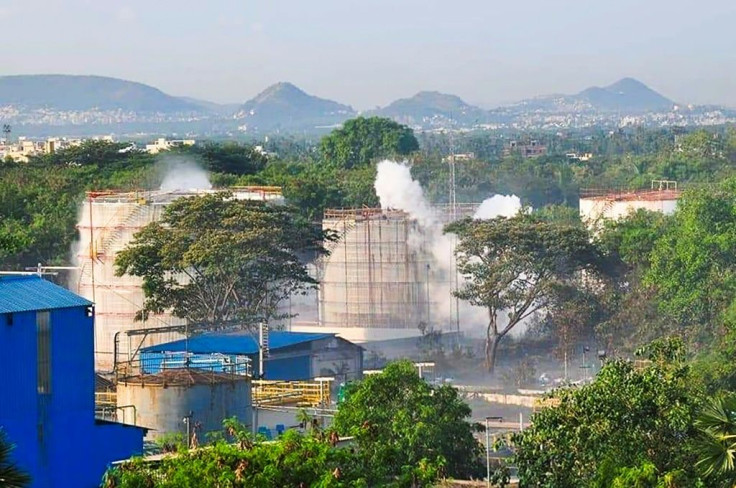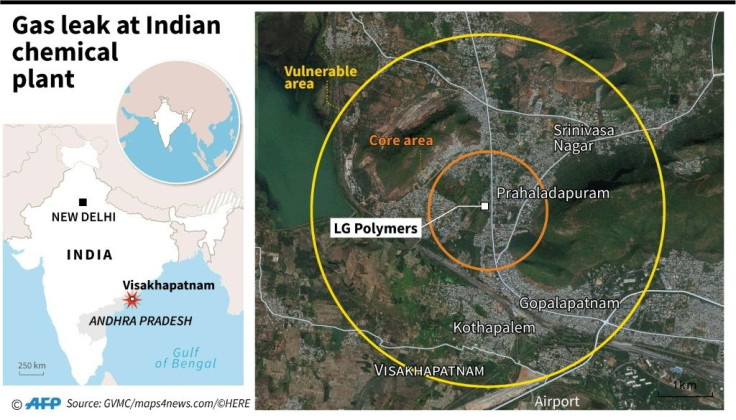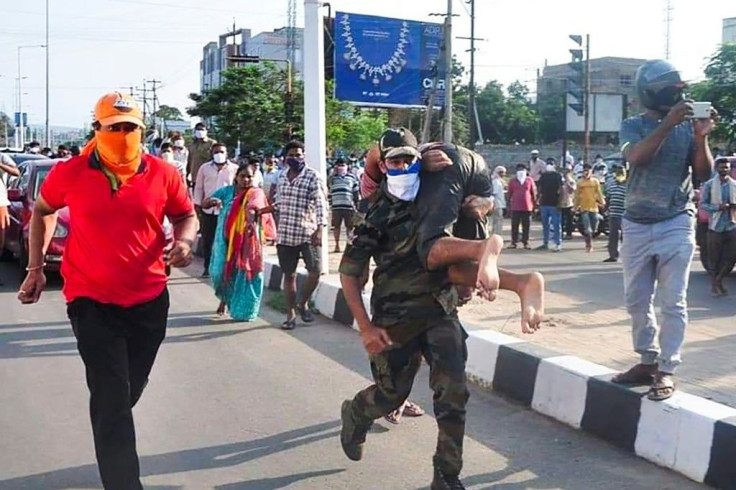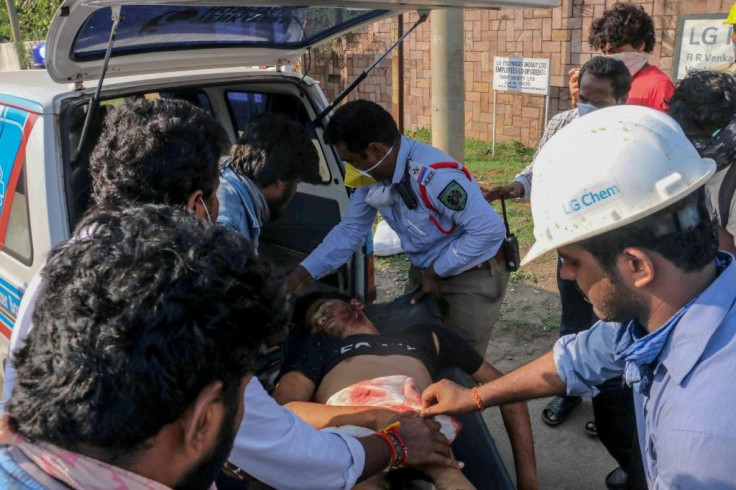Battle To Prevent Fresh Gas Leak At Indian Plant

Engineers battled Friday to prevent more toxic gas escaping at a chemical plant on India's east coast, a day after a pre-dawn leak killed 12 people and knocked locals unconscious in the street.
Although the death toll was lower than feared, the accident which left hundreds hospitalised outside the industrial port city of Visakhapatnam evoked memories of Bhopal where a gas leak killed around 3,500 people in 1984.
Late on Thursday the evacuation zone around the plant owned by South Korea's LG Chem was widened with hundreds more people in 10 localities brought to safety as a precaution, police said.
"The situation is better now but we can't say it is completely normal. The temperature in the tanks has been brought down by 120 degrees but we need to bring it down further by 25 degrees," senior police officer Swaroop Rani told AFP.
South Korean parent company LG Chem said Friday that it was "taking necessary measures, such as adding water" to keep the tanks cool.
On Friday afternoon a senior official in Visakhapatnam said that it would take "a few more hours" to bring the temperature low enough.

He said, on condition of anonymity, that police have also registered a case of manslaughter against the company management, accusing them of endangering public lives through negligence.
The national green tribunal, India's environment watchdog, meanwhile ordered that the plant owner, LG Polymers, a unit of South Korea's LG Chem, pay an initial fine of $6.2 million.

The gas leaked out at around 3.30 am on Thursday.
Horrifying footage on Indian television showed men, women and children slumped motionless in the streets.
"There was utter confusion and panic. People were unable to breathe, they were gasping for air. Those who were trying to escape collapsed on the roads -- kids, women and all," local resident Kumar Reddy, 24, told reporters.

Madam Moham, a doctor at the King George Hospital, said Friday that 52 children had been admitted with symptoms including nausea, dizziness, respiratory distress and throat irritation.
"Almost all the children are now stable. We have only three cases that were serious," he told AFP.

"I pray for everyone's safety and well-being in Visakhapatnam," Prime Minister Narendra Modi said on Twitter.
The plant, operated by LG Polymers, a subsidiary of LG Chem, is on the outskirts of Visakhapatnam.
The city and the surrounding area are home to around five million people.
The plant had been left idle because of the coronavirus lockdown, according to Rani, an assistant police commissioner in Visakhapatnam.
"(The gas) was left there because of the lockdown. It led to a chemical reaction and heat was produced inside the tanks, and the gas leaked because of that," Rani told AFP on Thursday.
LG Chem confirmed the plant, which makes polystyrene products, was not operating because of the lockdown, but there were maintenance staff at the facility, a spokesman in Seoul told AFP.
Overnight some evacuated families were forced to sleep on the pavements or in cars, local media reported.
Municipal authorities sprayed water on Friday morning to reduce the effect of the gas.
The leak happened because the gas was not stored at the appropriate temperature, causing pressure to build up and break the valve, the CSE said.
The tank was also "old and not properly maintained" and there was no monitoring mechanism installed to specifically detect styrene, it said.
The incident "shows us that there are ticking bombs out there as the lockdown ends and industries start resuming activities," it added.
© Copyright AFP {{Year}}. All rights reserved.





















